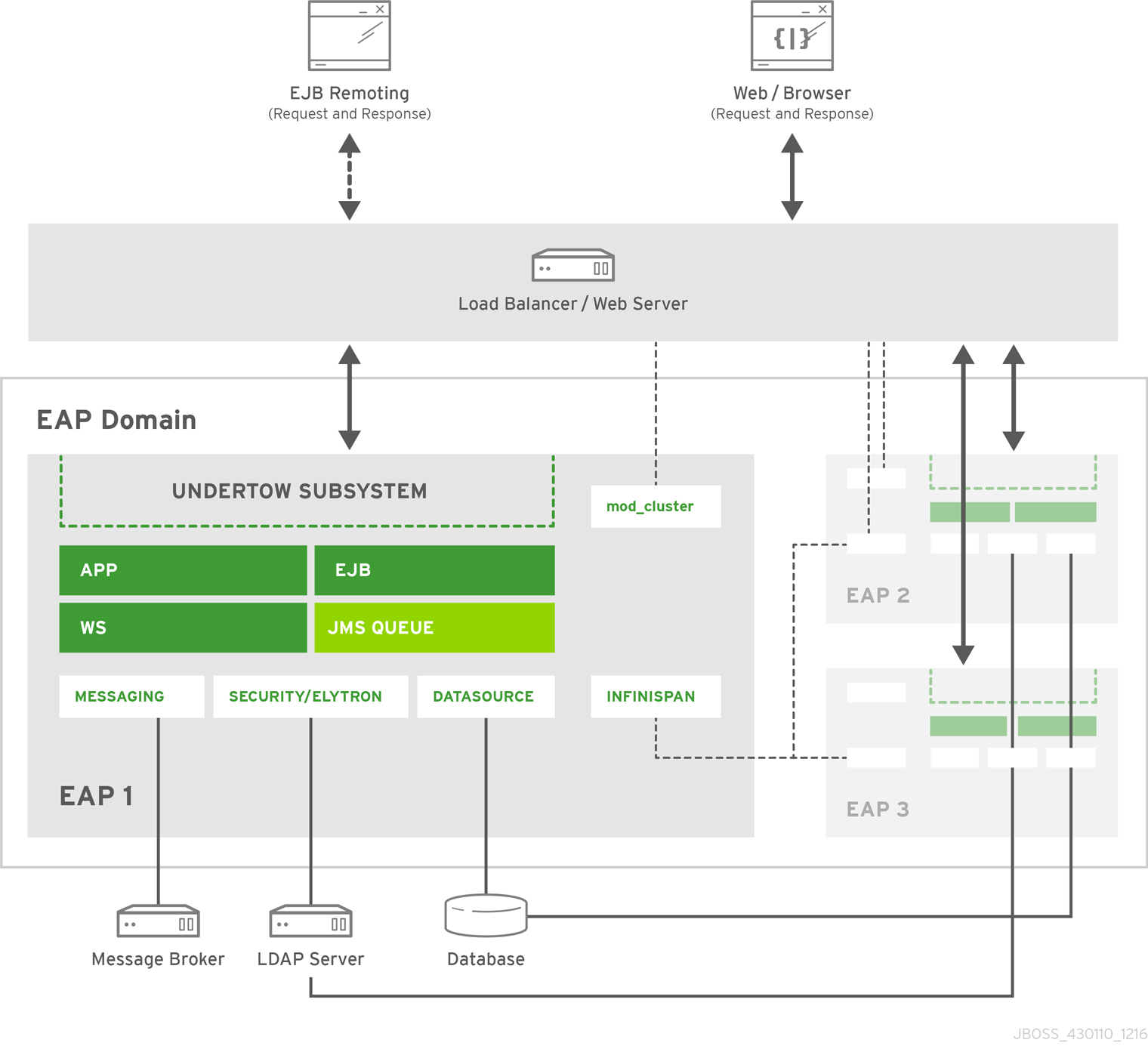jboss eap jboss
利用undertow subsystem设置一个页面的重定向
standalone.xml增加如下内容即可实现
<host name="default-host" alias="localhost">
<http-invoker security-realm="ApplicationRealm"/>
+ <filter-ref name="rewrite-url" predicate="path('/myurl')"/>
</host>
<filters>
+ <rewrite name="rewrite-url" redirect="true" target="/myrewriteurl0"/>
</filters>
how-to-rewrite-a-rewritevalve-for-undertow-jboss-7-2-eap
document
JBoss EAP7.2.0
Simple Example

This example shows a simple JBoss EAP setup. The JBoss EAP instance has two applications deployed to it. It is also configured to connect to a database using the
datasourcessubsystem and a Kerberos server which can use either the legacysecuritysubsystem or theelytronsubsystem. These connections are exposed to the deployed applications. The JBoss EAP instance handles requests through the undertow subsystem and directs those requests to the appropriate application. The applications use the APIs exposed by JBoss EAP to connect to the database and Kerberos server, and perform their implemented business logic. After completion, the applications send a response back to the requester through the undertow subsystem.
Expanded Example

This example illustrates a more complex setup involving three JBoss EAP instances arranged in a managed domain with either a load balancer or a web server. The three instances are also configured to support high availability through load balancing using mod_cluster and session replication using Infinispan. All three JBoss EAP instances have a web application, a web service, and EJB deployed. One JBoss EAP instance has a JMS queue configured through the
messaging-activemqsubsystem. All three JBoss EAP instances have connections to a database through the datasource. They also have a connection to the LDAP server using either the legacysecuritysubsystem or theelytronsubsystem. In addition, one JBoss EAP instance is configured to connect to an external message broker through themessaging-activemqsubsystem. Those configured connections are exposed to the applications, web services, EJBs, and JMS queues deployed to that respective instance.
All inbound requests intended for the application, web service, or EJB are first received by the load balancer or web server. Based on the configured load balancing algorithm and the information provided by each JBoss EAP instance, the web server or load balancer directs that request to the appropriate JBoss EAP instance. The JBoss EAP instance handles requests through the undertow subsystem and directs those requests to the appropriate application. The applications use the APIs exposed by JBoss EAP to connect to the database and Kerberos server, and perform their implemented business logic. After completion, the applications send a response back to the requester through the undertow subsystem. Any non-persisted information, for example session information, is propagated among the JBoss EAP instances through the infinispan subsystem.